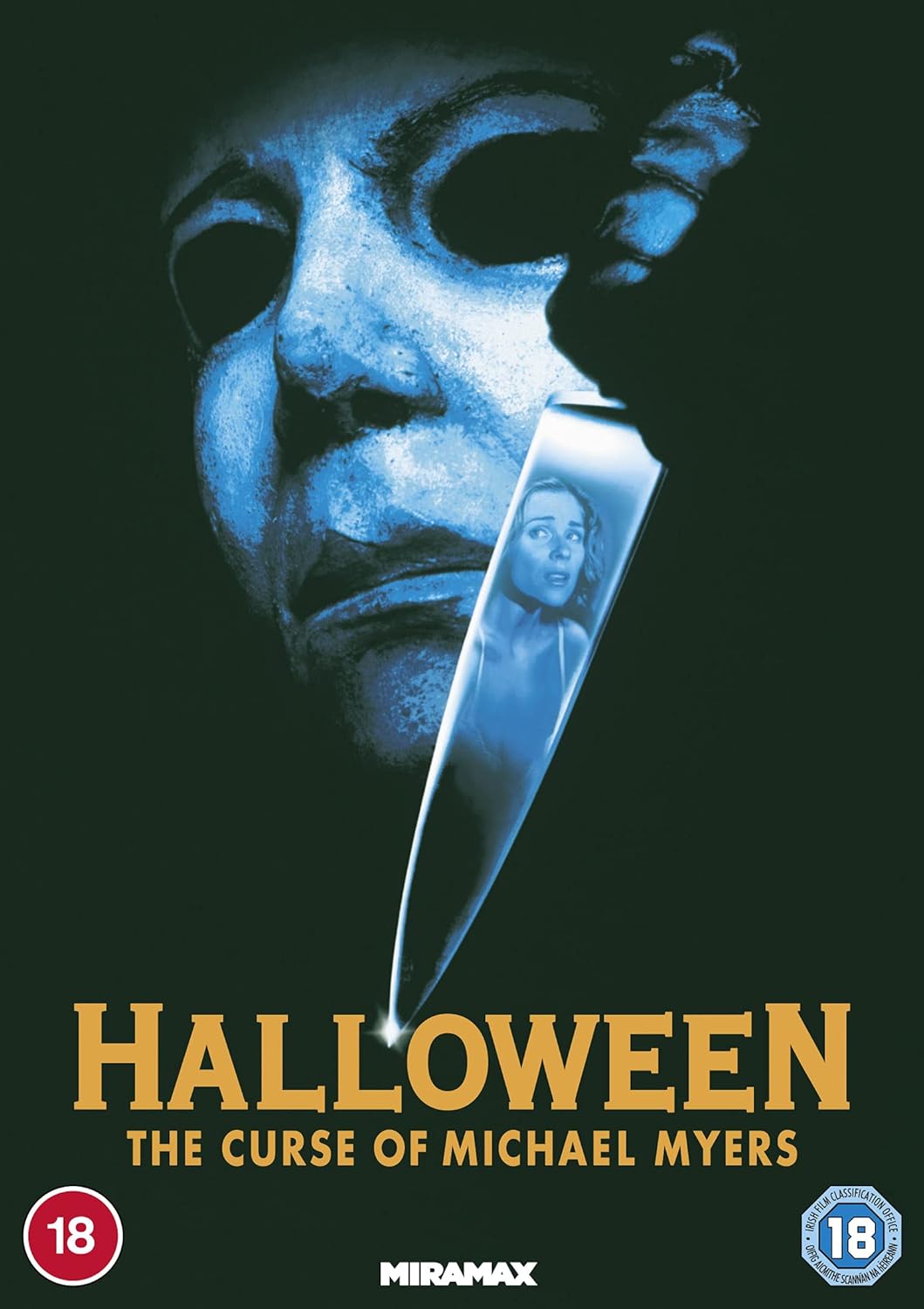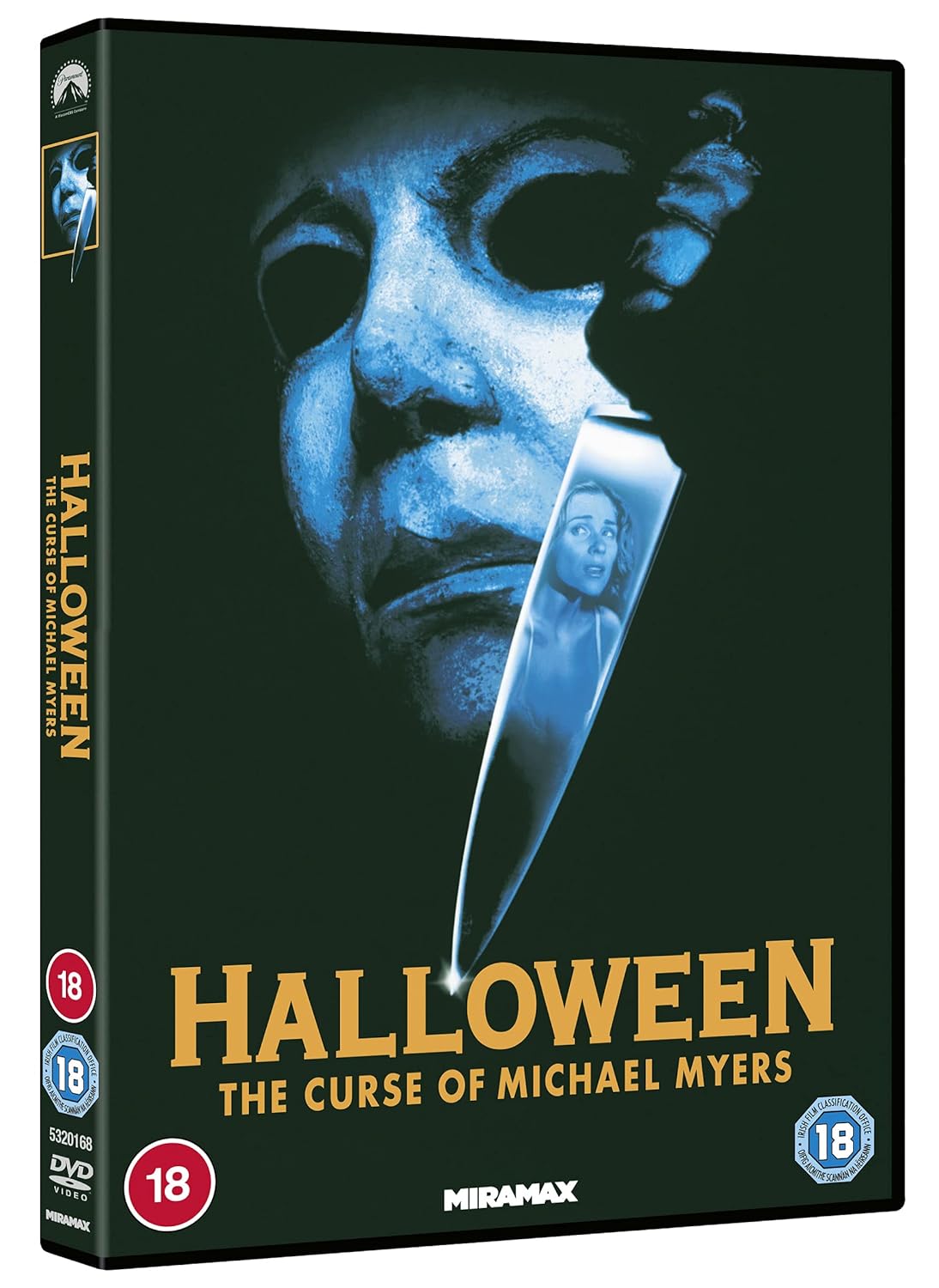
Halloween 6: The Curse of Michael Myers Review Michael Myers Movies – Oemiu
Halloween 6: A Thorn in the Side – Deconstructing The Curse of Michael Myers
Halloween 6: The Curse of Michael Myers. The very name can elicit groans from some die-hard fans and a shrug from others. Released in 1995, it occupies a peculiar space within the Halloween franchise, standing as arguably the most divisive entry in the long and storied history of Michael Myers movies. While some entries are simply forgettable, Halloween 6 actively inspires debate, thanks to its convoluted plot, its departure from the established mythology, and the behind-the-scenes turmoil that plagued its production. This film attempted to explain the seemingly unexplainable: the relentless evil that fuels Michael Myers and his unstoppable killing sprees. Instead of leaving the Shape a purely supernatural entity driven by instinct, it offered a concrete, albeit bizarre, explanation rooted in Celtic Druidism and a cult known as the Cult of Thorn. This explanation, coupled with a change in tone and some questionable character decisions, created a film that many consider to be a far cry from the tense, suspenseful horror of John Carpenter’s original. However, is the hatred truly warranted? Or is there a diamond in the rough, a misunderstood gem hidden beneath layers of narrative excess? Let’s dissect the movie and explore what makes “The Curse of Michael Myers” such a controversial, yet undeniably fascinating, entry in the slasher canon.
The Thorn Cult and the Mythological Misstep
The core of the controversy surrounding Halloween 6 lies in its explanation for Michael’s evil. The Cult of Thorn, a group of Druids, is introduced as the force driving Michael’s relentless pursuit of his family. According to this narrative, a child is chosen from each generation to be the sacrifice required to appease the ancient Celtic deity Samhain. This child receives the “Curse of Thorn,” which compels them to kill their entire family, thereby ensuring the prosperity of the tribe. Michael Myers, of course, is the chosen one for his generation. This revelation fundamentally alters the perception of Michael, transforming him from a seemingly unstoppable force of nature into a puppet controlled by an ancient cult. This decision to ground Michael’s evil in a specific, albeit fantastical, explanation clashes with the original film’s ambiguity. Carpenter’s Michael was terrifying precisely because his motivations were unclear, his evil seemingly innate and inexplicable. Stripping away this ambiguity diminishes the character’s mystique and turns him into a tool in a convoluted plot. It’s like explaining why a ghost haunts a house – sometimes the unexplained is far more frightening than any concrete reason. Furthermore, the Cult of Thorn itself is poorly developed and feels out of place within the Halloween universe. The Druidic rituals and Celtic imagery clash with the mundane suburban setting of Haddonfield, creating a jarring disconnect that many viewers find difficult to reconcile.
The film’s attempt to provide a definitive answer to Michael’s evil backfires because it simultaneously overcomplicates the story and diminishes the character’s inherent terror. It transforms a primal force of nature into a pawn in a supernatural conspiracy. Many fans preferred the mystery and the implied supernatural element, rather than a detailed explanation that demystified one of horror’s most iconic villains. The film’s producers and writers were trying to explain the unexplainable, and in doing so, they arguably ruined a great deal of what made the Halloween franchise work in the first place. The film’s departure from the series’ core themes of unstoppable evil and familial horror is often cited as its greatest failing. Exploring the nuances of Michael Myers movies requires an appreciation for the simpler, scarier roots of the franchise.
Production Troubles and the Producer’s Cut
The finished product of Halloween 6: The Curse of Michael Myers is only half the story. The film’s troubled production history is well-documented and contributes significantly to its negative reputation. The original theatrical cut was heavily altered by Dimension Films, the studio then overseeing the Halloween franchise. Significant scenes were cut, characters were altered, and the ending was completely rewritten, leading to a disjointed and unsatisfying film. The infamous “Producer’s Cut,” also known as the “Halloween 666: The Origin of Michael Myers,” represents director Joe Chappelle’s original vision for the film. This version restores much of the excised footage, offering a more coherent, though still flawed, narrative. The Producer’s Cut sheds light on the Cult of Thorn’s motives, provides more context for Dr. Wynn’s involvement, and offers a completely different ending. While it doesn’t magically transform Halloween 6 into a masterpiece, it does offer a more nuanced and arguably more disturbing portrayal of Michael Myers and his connection to the Thorn cult.
The key differences between the theatrical cut and the Producer’s Cut include:
* **Pacing and Structure:** The Producer’s Cut flows more smoothly, with a clearer narrative progression.
* **Character Development:** Characters like Dr. Wynn and the members of the Cult of Thorn are given more screen time and their motivations are better explained.
* **Gore and Violence:** The Producer’s Cut features more graphic violence and unsettling imagery.
* **Ending:** The ending is drastically different, with Dr. Loomis playing a more central role and Michael’s fate left ambiguous.
The existence of the Producer’s Cut raises an interesting question: can a film be truly judged based solely on its theatrical release when a significantly different version exists? Many argue that the Producer’s Cut represents the true intention of the filmmakers and offers a more accurate representation of the story they were trying to tell. Ultimately, both versions of Halloween 6 are flawed, but the Producer’s Cut offers a more coherent and potentially more rewarding viewing experience for those willing to delve into its complexities. It provides a richer understanding of the plot and, in some ways, slightly rehabilitates the film’s tarnished reputation, particularly among dedicated viewers of Michael Myers movies.
| Feature | Theatrical Cut | Producer’s Cut |
|---|---|---|
| Pacing | Choppy, Disjointed | Smoother, More Coherent |
| Character Development | Limited, Underdeveloped | More Detailed, Better Explained |
| Gore/Violence | Reduced, Censored | More Graphic, Uncensored |
| Ending | Resolved, Unsatisfying | Ambiguous, More Disturbing |
The Performance of Paul Rudd and the Loomis Legacy
Despite the film’s flaws, there are some redeeming qualities, most notably the performance of Paul Rudd in one of his earliest roles. Rudd plays Tommy Doyle, the young boy Laurie Strode babysat in the original Halloween. Now an adult obsessed with Michael Myers, Tommy becomes a central figure in the narrative, attempting to protect the Strode family from the Shape. Rudd’s performance is earnest and engaging, and he brings a sense of vulnerability and determination to the role. He manages to elevate the material, making Tommy a believable and sympathetic character amidst the chaos. The film also marks the final appearance of Donald Pleasence as Dr. Sam Loomis, Michael Myers’s psychiatrist and lifelong nemesis. Pleasence’s performance is, as always, captivating, and he brings a sense of gravitas and urgency to the role. Sadly, Pleasence passed away shortly after filming, making Halloween 6 his final film. The Loomis character is intrinsic to the success of the original Michael Myers movies, and his performance here is bittersweet, knowing that it marks the end of an era. The film struggles to honor Loomis’s legacy effectively, especially given the convoluted plot surrounding the Thorn cult. However, Pleasence’s dedication to the role is undeniable, and his final scenes are a poignant reminder of his contributions to the horror genre.
Tommy Doyle’s character in Halloween 6 is a clear example of a legacy character being used to connect the film to the original. However, while Rudd’s performance is strong, the character’s obsession with Michael Myers sometimes feels forced and contrived. His motivations are understandable, given his childhood trauma, but his actions often seem illogical and reckless. The film also attempts to tie in the Strode family lineage, further connecting it to the original Halloween. However, this connection feels tenuous and ultimately fails to add any meaningful depth to the story. The inclusion of these legacy elements feels more like fan service than a genuine attempt to explore the themes of the original film. This is a common issue with legacy sequels, where the desire to connect to the past often overshadows the need to create a compelling and original story. While Rudd and Pleasence deliver commendable performances, the script often fails to provide them with the material they need to truly shine.
Is Halloween 6 Worth Watching? A Verdict on The Curse
So, is Halloween 6: The Curse of Michael Myers worth watching? The answer is a qualified yes. It’s certainly not a great film, and it pales in comparison to the original Halloween and some of its sequels. However, it’s a fascinating case study in how a film can go wrong and a valuable example of the importance of respecting the source material. The theatrical cut is a mess, but the Producer’s Cut offers a more coherent and potentially more rewarding viewing experience. Paul Rudd’s performance is a highlight, and Donald Pleasence’s final appearance as Dr. Loomis is a bittersweet reminder of his contributions to the franchise. Ultimately, whether you enjoy Halloween 6 depends on your expectations. If you’re looking for a tense, suspenseful horror film that captures the spirit of the original Halloween, you’ll likely be disappointed. However, if you’re a fan of the Halloween franchise and you’re interested in exploring its more controversial entries, Halloween 6 is worth a look, particularly the Producer’s Cut. It offers a unique, albeit flawed, perspective on the Michael Myers mythos and provides plenty of fodder for discussion and debate.
Considering the impact of all the Michael Myers movies, this one remains a point of contention. It’s a film that attempts to answer questions that were perhaps better left unanswered. It’s a film that suffers from production problems and conflicting visions. But it’s also a film that features strong performances, intriguing (albeit flawed) ideas, and a lasting legacy, for better or worse. It’s a testament to the enduring appeal of Michael Myers that even the worst entries in the franchise continue to spark debate and discussion. It is a film that encourages discussion, especially around how horror franchises can adapt and change without losing the essence that made them popular in the first place. Whether you love it or hate it, Halloween 6 is undeniably a significant part of the Halloween story, and its legacy continues to be felt in subsequent films and reboots. It is an important, if flawed, piece of the puzzle when examining the overall narrative arc and cultural impact of Michael Myers movies.
FAQ: Halloween 6: The Curse of Michael Myers
What is the main controversy surrounding Halloween 6?
The main controversy stems from the film’s attempt to explain Michael Myers’s evil through the Cult of Thorn, a group of Druids who supposedly curse a child in each generation to kill their family as a sacrifice. This explanation clashed with the original film’s ambiguity, where Michael’s evil seemed innate and inexplicable. Many fans felt that this explanation demystified the character and transformed him into a pawn in a supernatural conspiracy, diminishing his inherent terror. The film’s departure from the series’ core themes of unstoppable evil and familial horror is often cited as its greatest failing, making it a difficult entry for many to accept within the Michael Myers movies canon. The film also suffered from production problems that led to a disjointed theatrical cut, further contributing to its negative reputation.
What is the difference between the Theatrical Cut and the Producer’s Cut of Halloween 6?
The Theatrical Cut of Halloween 6 was heavily altered by Dimension Films, resulting in a choppy and disjointed narrative. Scenes were cut, characters were changed, and the ending was completely rewritten. The Producer’s Cut, also known as the “Halloween 666: The Origin of Michael Myers,” represents director Joe Chappelle’s original vision. It restores much of the excised footage, offering a more coherent narrative, better character development, more graphic violence, and a drastically different ending. Key differences include a smoother pacing in the Producer’s Cut, a more detailed explanation of the Cult of Thorn’s motives, and a more ambiguous fate for Michael Myers at the end. Many argue that the Producer’s Cut provides a richer understanding of the plot and rehabilitates the film’s tarnished reputation.
Does Donald Pleasence die in Halloween 6?
Donald Pleasence does not die *in* Halloween 6, but the film marks his final appearance as Dr. Sam Loomis, Michael Myers’s psychiatrist. Pleasence passed away shortly after filming, making Halloween 6 his last film role. While Loomis survives the events of the theatrical cut of the film (though the ending leaves his fate ambiguous), he is seemingly killed by Michael Myers in the Producer’s Cut’s ending, although it’s not explicitly shown. Regardless, it was his last contribution to the Halloween franchise, making his performance bittersweet for fans of Michael Myers movies.
Is Paul Rudd good in Halloween 6?
Yes, Paul Rudd’s performance as Tommy Doyle is generally considered a highlight of Halloween 6. Despite the film’s flaws, Rudd delivers an earnest and engaging performance, bringing vulnerability and determination to the role. He elevates the material, making Tommy a believable and sympathetic character amidst the chaos. Many consider his portrayal of Tommy Doyle to be one of the film’s few redeeming qualities, showcasing his acting talent even in one of his earlier roles. He manages to capture the character’s obsession with Michael Myers while also portraying his fear and determination to protect the Strode family.
Is the Cult of Thorn canon in the Halloween franchise?
The canonicity of the Cult of Thorn is a subject of much debate among Halloween fans. Following the events of the sixth film, later installments like “Halloween H20: 20 Years Later” disregarded the Curse of Thorn storyline. The film’s explanation of Michael’s actions as being controlled by an external force was largely rejected by both fans and subsequent filmmakers. The Rob Zombie remakes also ignore the Thorn storyline. With the release of David Gordon Green’s Halloween trilogy (2018-2022), which directly ignores all sequels after the original 1978 film, the Cult of Thorn has been effectively removed from the main timeline of the franchise. The concept remains a controversial element within the fanbase of Michael Myers movies.
Is Halloween 6 the worst Halloween movie?
While opinions vary, Halloween 6 is often considered one of the worst, if not the worst, Halloween movie by many fans. Its convoluted plot, the introduction of the Cult of Thorn, and the film’s troubled production history contribute to its negative reputation. Other entries in the franchise, such as “Halloween: Resurrection,” are also frequently cited as contenders for the worst film, but Halloween 6’s departure from the established mythology and its perceived demystification of Michael Myers often make it a prime target for criticism. Ultimately, whether it is the “worst” is subjective, but it is undeniable that Halloween 6 is one of the most divisive and controversial entries in the series of Michael Myers movies.
Should I watch Halloween 6: The Curse of Michael Myers?
Whether you should watch Halloween 6 depends on your expectations and your level of interest in the Halloween franchise. If you are a hardcore fan of Michael Myers movies and are interested in exploring the series’ more controversial entries, then Halloween 6 is worth a look, particularly the Producer’s Cut. However, if you are looking for a tense, suspenseful horror film that captures the spirit of the original Halloween, you may be disappointed. It’s a flawed film, but it offers a unique perspective on the Michael Myers mythos and provides plenty of fodder for discussion and debate. Just be prepared for a convoluted plot and a departure from the traditional Halloween formula.


Price: $15.06 - $16.49
(as of Sep 11, 2025 06:01:36 UTC – Details)




